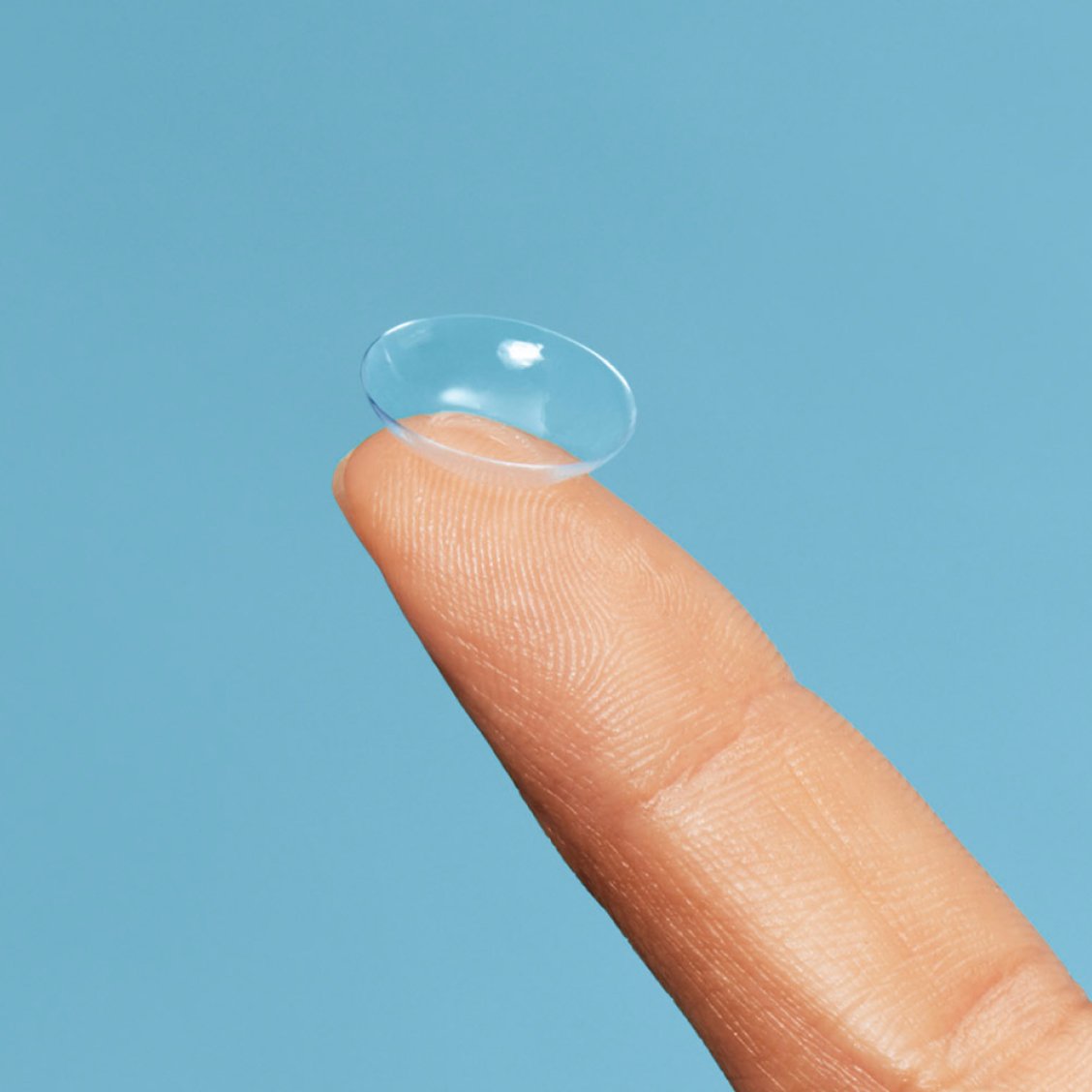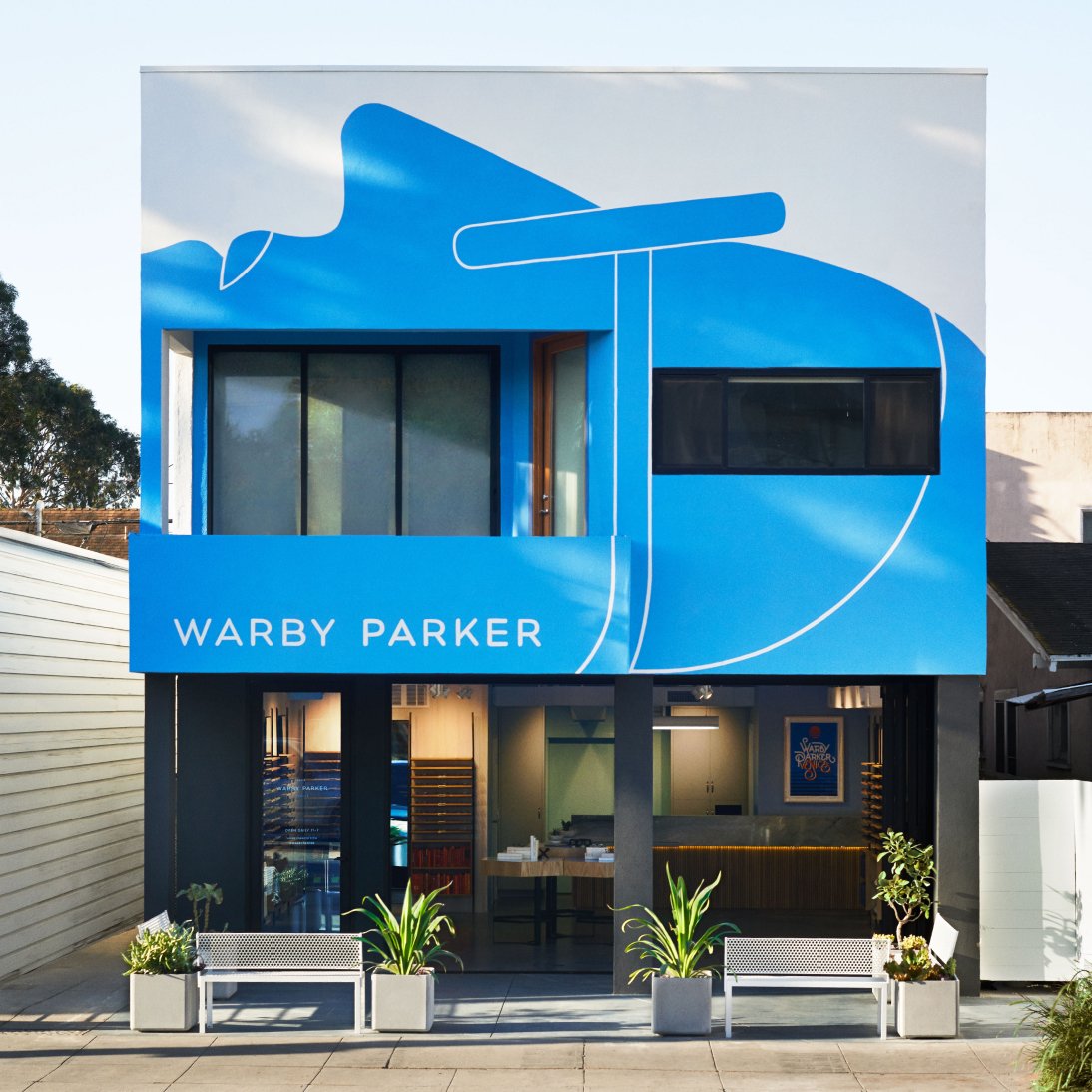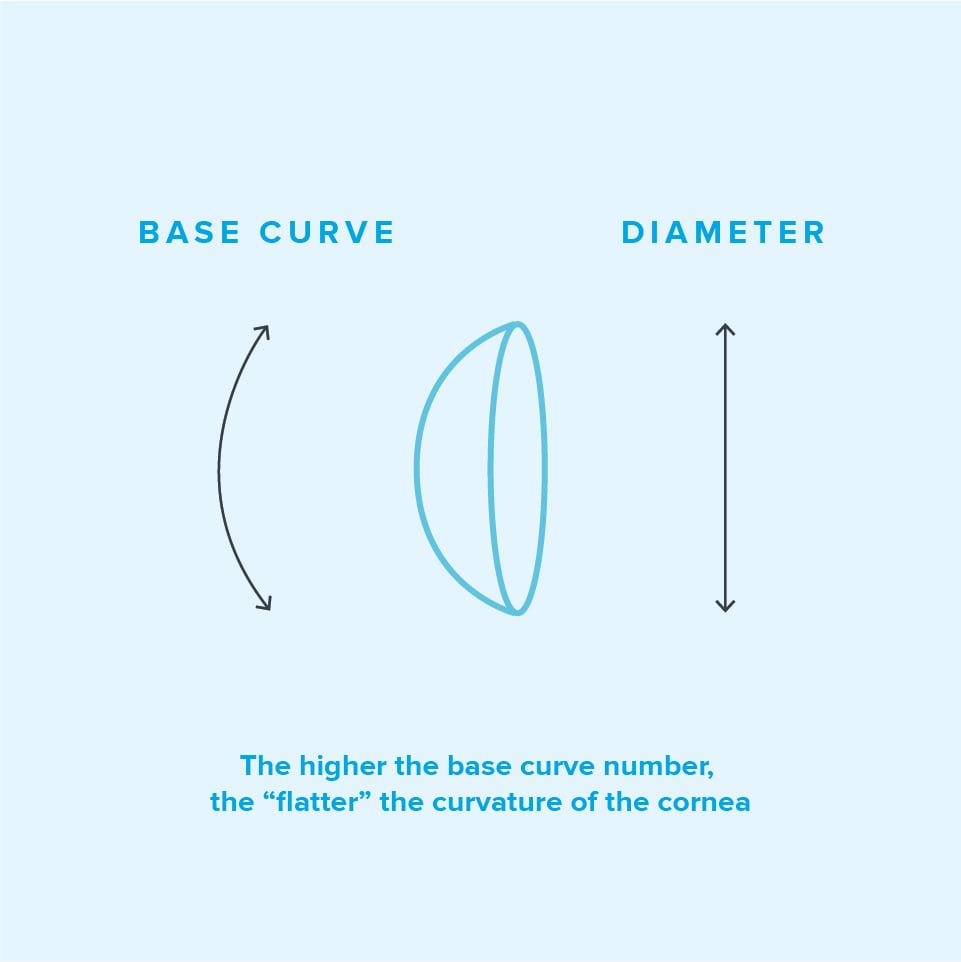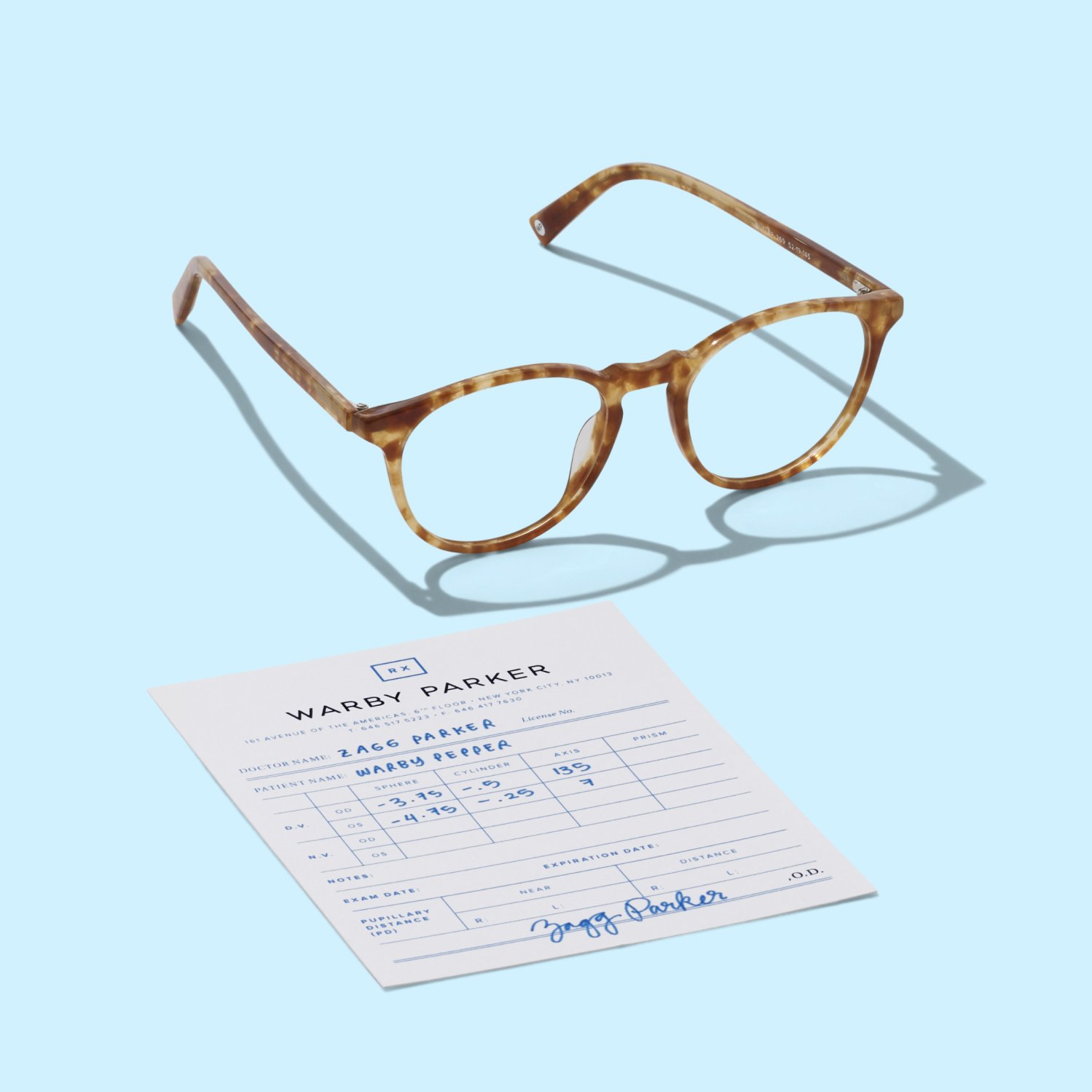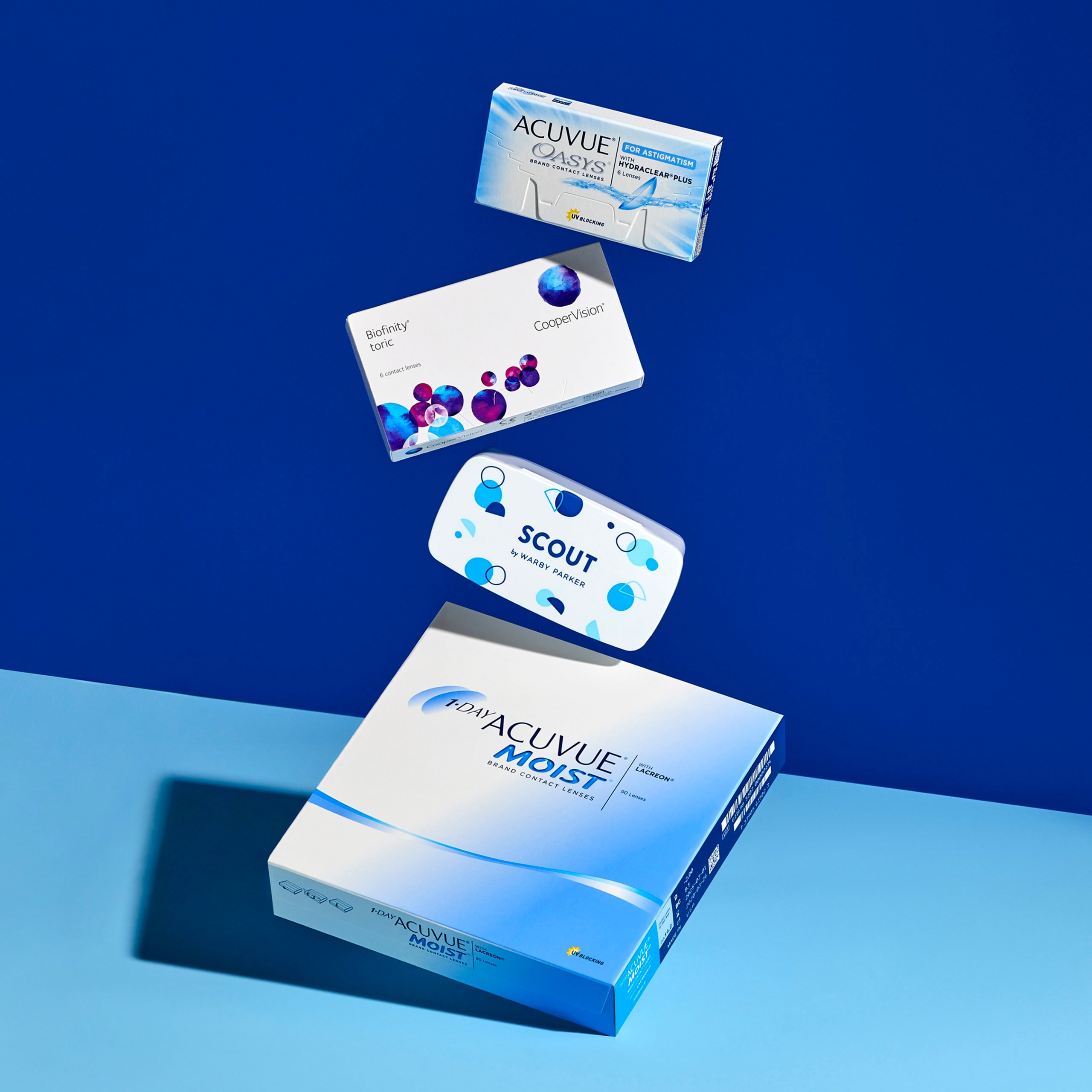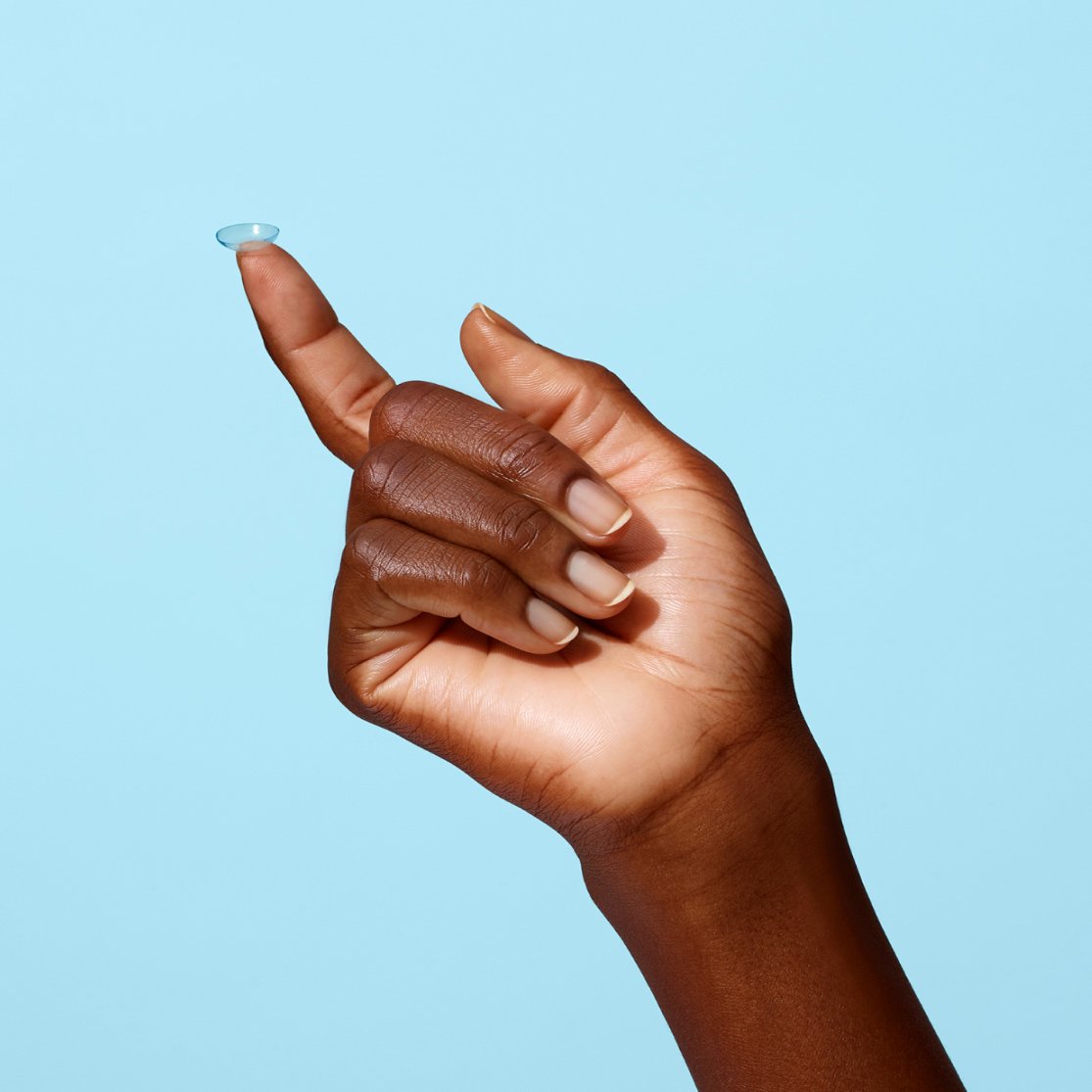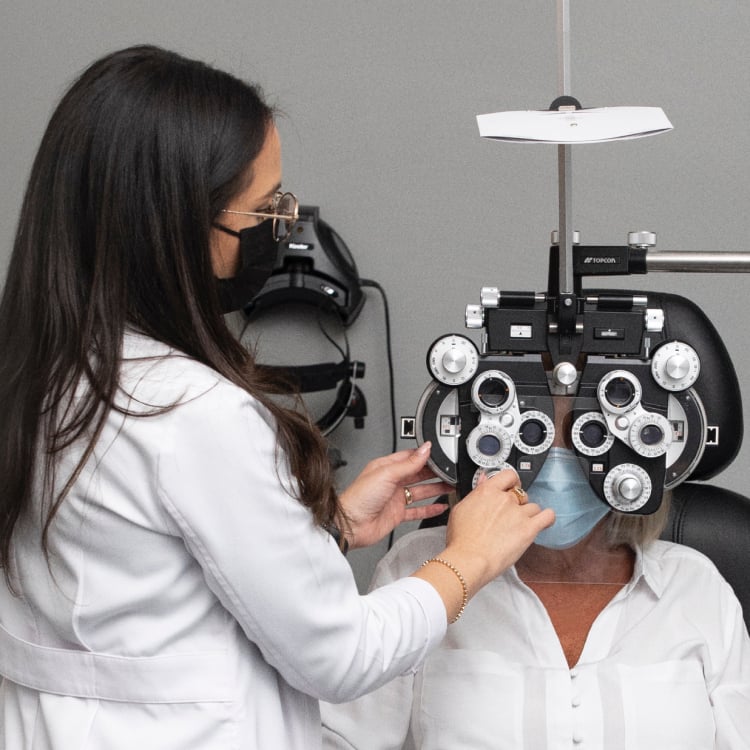You can think of a contact lens exam as an add-on to a comprehensive eye exam. A contact lens exam can have several components, including a consultation with the optometrist, measurements of a few key parts of your eyes, a tear film evaluation, and a contact lens fitting.
If it’s your first time wearing contacts, this process may also include some instruction on putting in and taking out your contacts. All of these procedures ensure that your contacts will fit comfortably—yes, there are different sizes!—and give you the clearest vision possible.
If you want to wear contact lenses (either instead of or in addition to glasses) then getting a contact lens exam is a necessary first step.
Want to know what to expect during a contact lens exam? Yours may not include all of the components below, as different optometrists have different routines. However, these are the most common steps you’ll encounter as you get ready to be a contact lens-wearer.
A brief consultation gives you the chance to ask any questions you might have about wearing and caring for contacts.
During the consultation, your optometrist will speak with you about which types of contact lenses will suit your visual needs and your lifestyle. They’ll want to know the answers to questions like: Do you plan on wearing contacts for the majority of your day? Are you interested in wearing contacts solely for certain activities like sports?
If you have astigmatism, presbyopia, or any other factor that will influence what type of contact lenses you wear, your optometrist will make recommendations accordingly. You can also discuss the advantages and disadvantages of different disposable contact lenses, whether they’re dailies, biweeklies, or monthlies.
Eye Measurements
During your contact lens exam, your optometrist will need to measure certain parts of your eye to make sure your contacts fit well.
Corneal Curvature and Contact Lens Diameter
Using a tool called a keratometer, the optometrist will measure the curve of your cornea. This measurement decides the base curve of your contact lens, which appears on your prescription as “BC.” Matching your corneal curvature to your contact lens is essential for both comfort and clear vision.
If your cornea has a particularly uneven curve or other abnormalities, it may need to be “mapped” with more advanced tools that show its topography in detail.
The optometrist will also include a contact lens diameter on your prescription. Contact lens diameters typically fall between 13 and 15 millimeters, but even a slight shift in diameter can mean a big difference in fit.
Pupil Size
Your optometrist may measure your pupil as well. This measurement is especially important for multifocal and cosmetic contacts, as it helps determine how well you’ll see through the lens.
Tear Film Evaluation
Eyes prone to dryness will have more difficulty wearing contact lenses. For this reason, your optometrist may use a microscope, employ certain types of dyes, or perform tests to examine the tear film that naturally moisturizes the surface of your eye. The results of this evaluation can help determine the best contact lens material for you.
The contact lens fitting allows your optometrist to look at how a contact lens functions and fits your eye as you’re wearing it. After the above portions of the contact lens exam have been completed, they’ll have you put in a pair of trial contacts based on their recommendations. Then, they’ll look at your eyes through the slit lamp microscope to gauge for proper movement and centration.
They’ll also test your visual acuity while you’re wearing the contacts to see if they’re performing as they should. This portion of the contact lens exam will feel similar to the refraction test performed during a standard eye exam—you’ll probably read lines from a chart or screen.
Once your optometrist has confirmed the fit of your contact lenses, the exam portion is over and you’ll get your contact lens prescription.
But if you’re a first-time wearer, you may have to practice putting your contact lenses in and taking them out. The optometry office is a great place to do so, as your optometrist will guide you through the steps and have helpful tips.
You may be given a set of trial lenses to use over the course of the next several days—some prescriptions are trickier than others, and it’s important to get them right. Monitor how you feel while wearing your new contacts and get used to caring for them. At a follow-up appointment, your optometrist will take another look at your eyes while your contacts are in to make sure everything looks like it should.
Just like your regular eye exams, contact lens exams should occur yearly. Annual contact lens exams enable your provider to update or renew your prescription, check for any contact-related health issues, and allow you to ask your optometrist for any further recommendations.
To save time, you can always request that your contact lens exam be conducted at the same appointment as your comprehensive eye exam.
Contact lens exams typically cost somewhere between $100 and $250. At Warby Parker stores, eye exams for glasses and contacts start at $130 (prices may vary depending on the location).
Contact lens exams involve highly detailed measurements of your eye and an optometrist’s expertise in fitting you with the right size lens and the right prescription. It’s a multi-step process that can kick off a lifelong relationship with contact lenses—the cost correlates with the effort and knowledge necessary for the optometrist to complete the exam.
A Contact Lens Exam Is Your Key to Comfort and Convenience
Once you’ve completed your contact lens exam and follow-up appointment(s), you’re free to order contacts online or through your optometrist whenever you need them! We hope you have a better idea for what to expect from your first exam, and that you’ll enjoy all the comfort and freedom that contact lenses have to offer.

